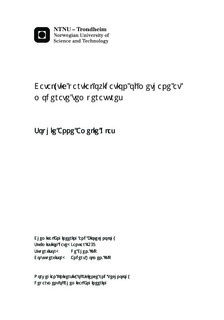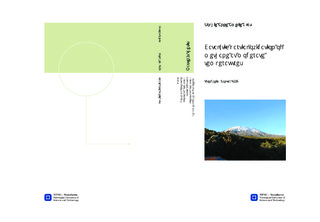| dc.description.abstract | Catalytic partial oxidation (CPO) is considered to be a promising route to produce synthesis gas from methane. In this work cobalt supported on CeO2−Al2O3 nanocomposites calcined at temperatures ranging from 1173 K to 1473 K have been characterized and tested in a lab-scale reactor. The characterization techniques applied have been N2 adsorption-desorption, X-ray diffraction (XRD), temperature- programmed reduction (TPR) and H2 chemisorption. The activity testing has been done at three different furnace temperatures (923 K, 1023 K and 1123 K) at a GSHV of 75 LCH4/gcat·h with a CH4:O2:N2 ratio of 2:1:3.72.
In this work the major objectives have been to investigate the catalytic behavior of Co/CeO2−Al2O3 towards CPO of methane, and whether the varying concentration of oxygen vacancies in the ceria lattice influences the catalytic activity.
The BET surface area of CeO2−Al2O3 decreased as the calcination temperature increased. Comparison with pure Al2O3 calcined at corresponding temperatures confirmed the protective function of CeO2 against Al2O3 phase transformation. With XRD and subsequent Rietveld refinement the crystallite size and lattice parameter of CeO2 were found. As the former increased with increasing calcination tempera- ture, the determination of the latter showed no clear correlation between the lattice parameter, crystallite size and presence of cobalt.
The dispersion, which was estimated with H2 chemisorption, of cobalt on CeO2−Al2O3 calcined at 1173 K, 1273 K and 1373 K was quite uniform, whereas it decreased for the samples calcined at 1423 K and 1473 K. There is reason to believe that the results are affected by H2 spillover onto the CeO2.
Catalytic partial oxidation of methane over the in situ reduced catalysts gave high methane conversion and selectivities towards CO and H2, even at moderate temperatures such as 1023 K. Co/CeO2−Al2O3 (1173 K), (1273 K) and (1373 K) showed the best performance. An enhanced activity with decreasing CeO2 crystallite sizes has not been observed. The results support the indirect partial oxidation pathway with complete combustion in the bed entrance area and endotherm reforming in the lower part of the catalyst.
The stability of the catalysts seems limited, probably due to slow oxidation of the cobalt during time on stream and/or sintering. Mass transfer limitations are also suspected.
A cordierite monolith with an Al2O3 washcoat impregnated with CeO2 and cobalt was tested in methane CPO at 1023 K with a GHSV of 8000 h−1. Even though the CH4 conversion and selectivity towards H2 and CO were satisfactory, the stability decreased quickly. | |

